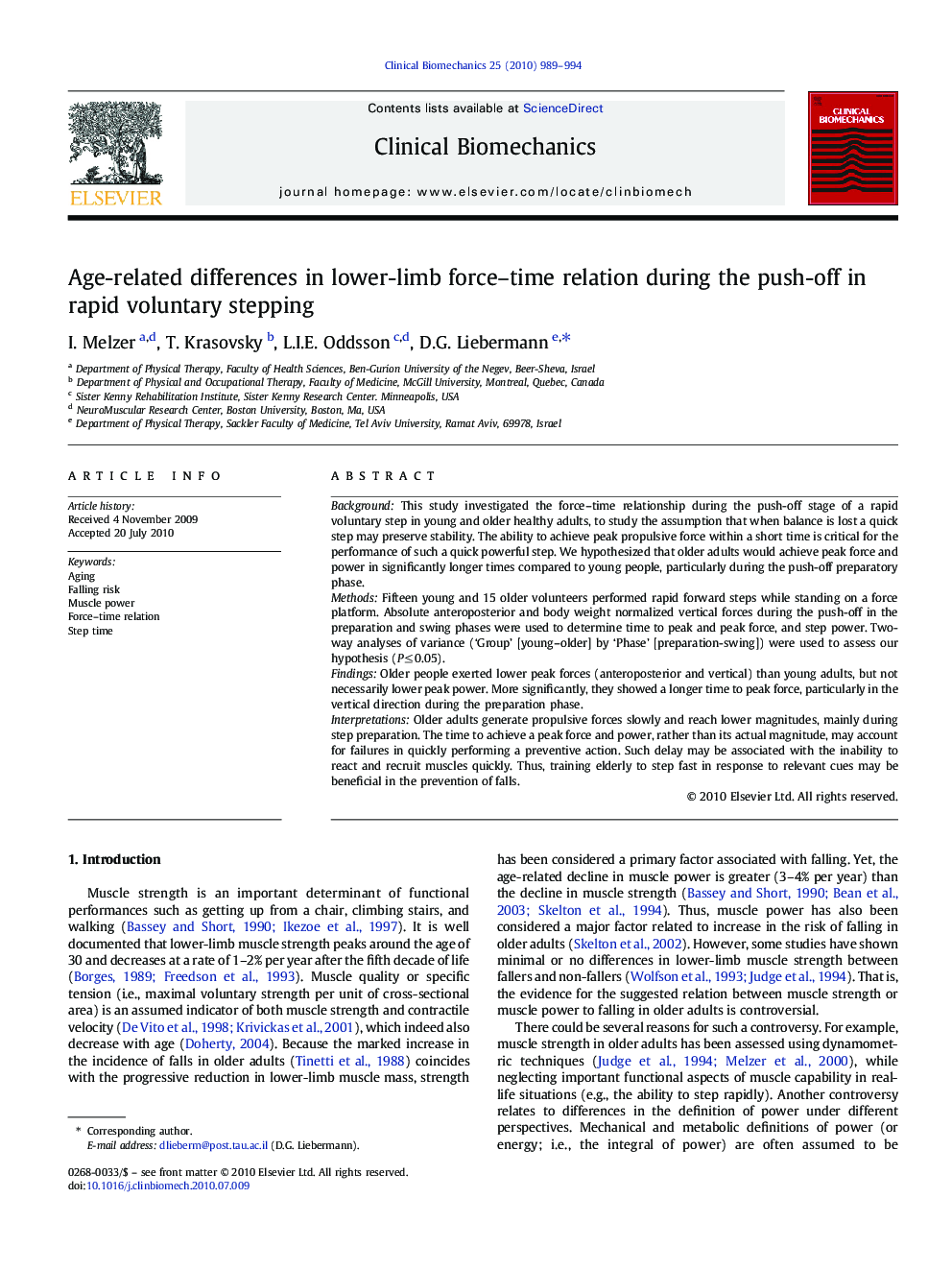| Article ID | Journal | Published Year | Pages | File Type |
|---|---|---|---|---|
| 4050883 | Clinical Biomechanics | 2010 | 6 Pages |
BackgroundThis study investigated the force–time relationship during the push-off stage of a rapid voluntary step in young and older healthy adults, to study the assumption that when balance is lost a quick step may preserve stability. The ability to achieve peak propulsive force within a short time is critical for the performance of such a quick powerful step. We hypothesized that older adults would achieve peak force and power in significantly longer times compared to young people, particularly during the push-off preparatory phase.MethodsFifteen young and 15 older volunteers performed rapid forward steps while standing on a force platform. Absolute anteroposterior and body weight normalized vertical forces during the push-off in the preparation and swing phases were used to determine time to peak and peak force, and step power. Two-way analyses of variance (‘Group’ [young–older] by ‘Phase’ [preparation-swing]) were used to assess our hypothesis (P ≤ 0.05).FindingsOlder people exerted lower peak forces (anteroposterior and vertical) than young adults, but not necessarily lower peak power. More significantly, they showed a longer time to peak force, particularly in the vertical direction during the preparation phase.InterpretationsOlder adults generate propulsive forces slowly and reach lower magnitudes, mainly during step preparation. The time to achieve a peak force and power, rather than its actual magnitude, may account for failures in quickly performing a preventive action. Such delay may be associated with the inability to react and recruit muscles quickly. Thus, training elderly to step fast in response to relevant cues may be beneficial in the prevention of falls.
